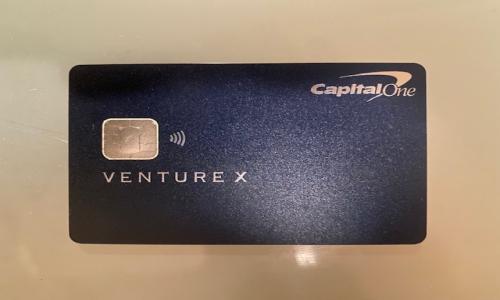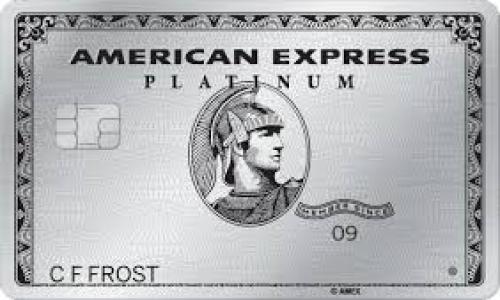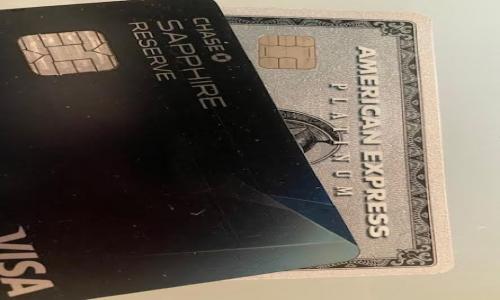Rule 1: You can do this to earn lots of points
There is nothing wrong with earning loyalty points from your favorite hotel or airline, or flexible points (such as Chase’s Ultimate Rewards points) that can later be transferred to a program or used for your travel expenditures. There is also nothing wrong with opening several credit cards to take advantage of sign up bonuses. Yes, the web is full of blogs run by kids who are traveling the world on points that they “earned” through churning cards that will tell you how to completely game the credit card system and extract points from everywhere. Yes, that is unethical and, yes, people who follow these blogs every day need to get new hobbies. However, having a few or even several cards that you use to accumulate points is completely reasonable. Credit card companies are exacting large transaction and processing fees from vendors. That is being passed on to you. It is fair to ask for some of the value back for your loyalty and usage.
Rule 2: You get more value back from earning the right travel and rewards points than you do from any other program
The industry standard is basically that a dollar spent on a credit card is worth as much a penny in remuneration to the consumer. Most cash back programs are geared to this number. Gift card programs through Chase’s Ultimate Rewards or Amex’s Membership Rewards will also give you back 1%. You may from time to time find a 20% or even a 30% bonus, but you are simply never going to get more than about a penny. Leading hotel rewards points and airline frequent flier points can easily be redeemed for 3 or 4 cents per dollar spent. Using points to stay at luxury hotels or to fly, or upgrade to, business or first class on long haul flights often results in value of as much as 8 or 9 cents per dollar spent! Hotel and airline points are therefore always your best bet.
Rule 3: Having the right cards with large lump sum sign-on bonuses is the easiest way to jumpstart a point earning strategy
Most people get more travel and reward points from credit card usage than they do from actually traveling, and many get many points through sign-on bonuses.
Rule 4: Not all travel and reward programs are equal
Before you earn points with a program, you need to examine whether the program is generous and whether it works for you. These programs are very different, even within a certain segment. For example, among hotels, Hyatt’s program is strong. Even after a 2014 devaluation, 30,000 points will give you a free night in Park Hyatts in Milan, Paris, Tokyo, Sydney or Zurich where a room could easily run you over $1,000 a night. While Marriott has a much larger global footprint, finding real value in its redemptions is more challenging. Other programs such as the Hilton, the Radisson or the IHG programs offer significantly less value. Within the airline category, British Airways has turned their Avios program into a great vehicle for short haul redemptions on American or on other OneWorld partner airlines. Delta, on the other hand, has turned both their airline and their SkyMiles program into one where even the most loyal traveller only sees value in Business Class inter-continental redemptions.
Rule 5: Hotel and Airline points should be used, not accumulated
People frequently make the mistake of hoarding points instead of using them. Hotel and airline programs can be devalued in multiple ways – by changing the number of points required for a reward, changing categories, changing partners, and of course by causing your points to expire. The terms of the program are very clear: the fine print always explains that the issuer can change or even withdraw the program at any time. And, as it becomes easier to earn points, virtually every major airline or hotel chain is tweaking, or even dramatically changing, their program each year. Therefore, while points may be a currency, they are not a store of value. This comes from firsthand experience. I lived in the Hotel Pulitzer in Amsterdam for four months about 16 years ago and accumulated tens of thousands of Starwood points that I never used; today those points are worth substantially less. Don’t make my mistake. Use your points!
Rule 6: Travel and Reward Programs Run by the Credit Card Companies Offer Much More Flexibility
Earning points in a credit card program and keeping them there until you are ready to use them enables you to avoid point or mileage devaluation (expiration) and to have flexibility of program or experiences. These programs can also allow you to earn points more quickly through 2x, 3x and even 5x spend categories and enable couples to pool points more easily. Within this category, the two best programs by far are the Chase Ultimate Rewards program and the Amex Membership Rewards program.
This chart shows the cards that produce the most valuable travel and rewards points.
Rule 7: Use Your Card, But Use it Judiciously
Put all of your finances on your credit cards and make sure to pay them off each month or the interest and penalties will cost your more than the value of points accrued. However, never spend more to use a credit card and never spend money just to accumulate points. Mileage runs to get status on an airline or loyalty-induced hotel stays to achieve status at a hotel at the end of the year make sense for hard core travelers, but spending runs never make sense even for hard core spenders.
Rule 8: Leverage your Point Earning Strategy Through Spend Bonuses, Dining Rewards and Online Spend Reward Programs
Having a card that accumulates travel and reward points is part of a strategy of earning points on your spend, but with a little extra work you can often earn more than 1 point per dollar spent. You can do this by taking advantage of spend categories (Chase Ink cards, for example, enable you to easily rack up 5x points at office supply stores like Staples and Office Depot). You should also enroll your cards in a dining rewards program (United, American and Delta all have these and you can enroll any card). Finally, before you spend money online, you should see if you can get bonus points for going through your credit card company’s portal (using www.evrewards.com is the best way to do this).
Rule 9: Cancelling Cards Is OK
As noted in Point 1, churning is unethical, even if the credit card companies have done little to preclude it. It is OK to cancel your cards if they don’t provide value to you. You should never cancel a card within six months of opening, however, as card companies will take back their card initiation bonuses. Instead of cancelling a card, consider asking for the annual fee to be waived as companies often agree to this. Since issuers make more from a well-used card on vendor fees, they have an incentive to keep the card in your hands.
Rule 10: …. But Cancelling Cards is Also Where You Risk Damaging Your Credit
Opening a couple of credit cards has very little impact on your credit score, unless you open several cards with several different issues at once (a red flag). Using cards judiciously and paying your bill in full each month actually helps your credit score. But, cancelling credit cards does impact your credit score as the decline in amount of credit that is being extended to you can impact your score. Before you cancel a card, ask the issuer to increase the credit available on another card with them that you are keeping (Chase, for example, will always do this for you) or consider asking to downgrade to a different, annual fee-free card issued by the same issuer.
See this article for more information on the risks of a card churning strategy to damaging your credit history.













Add your Comment
use your Google account
or use your BestCashCow account